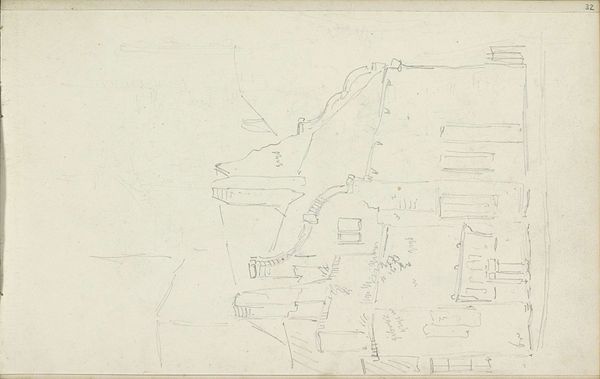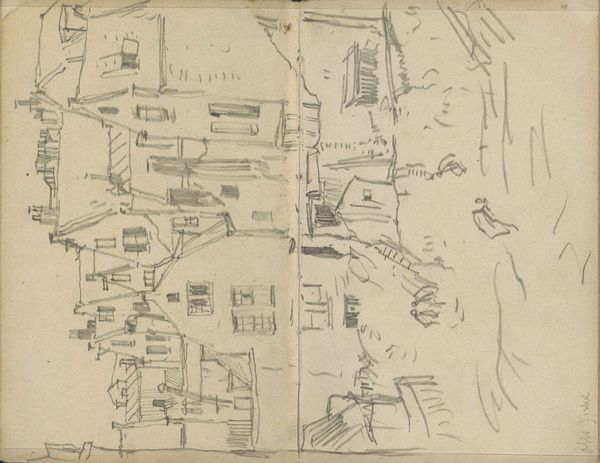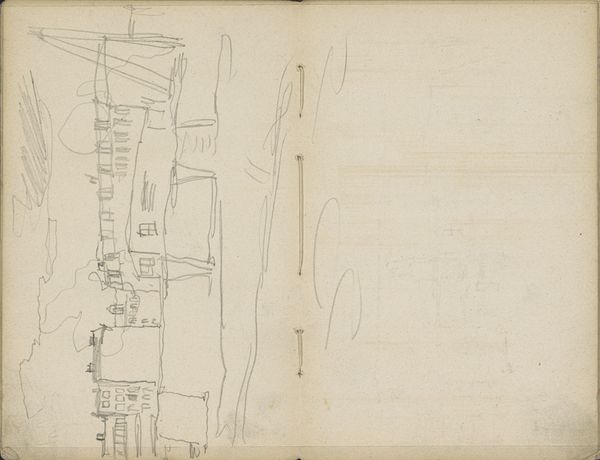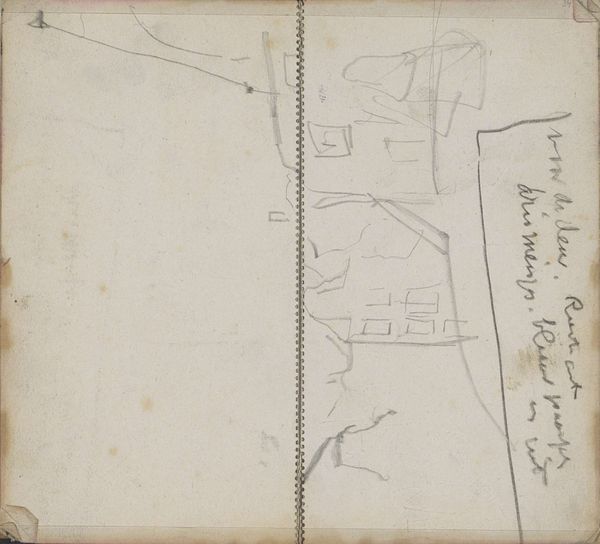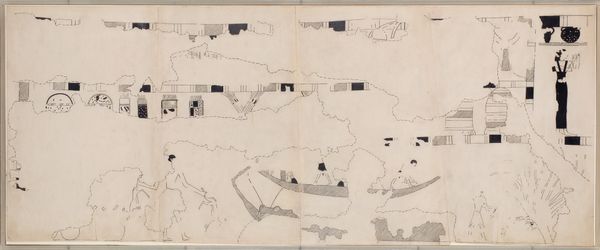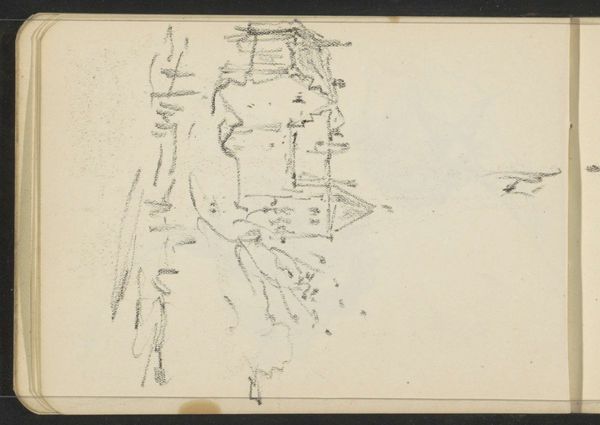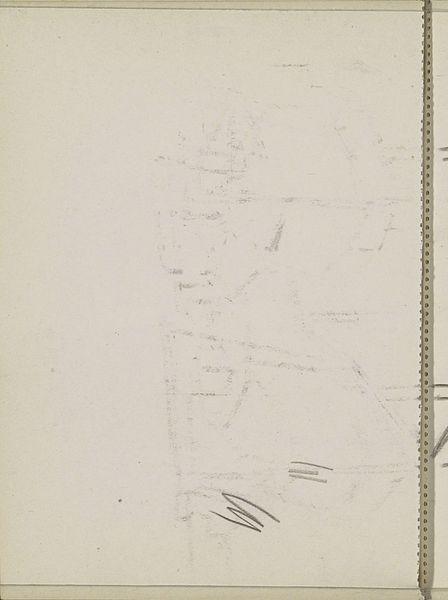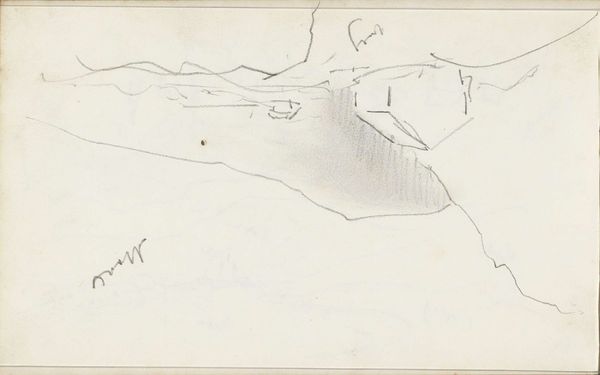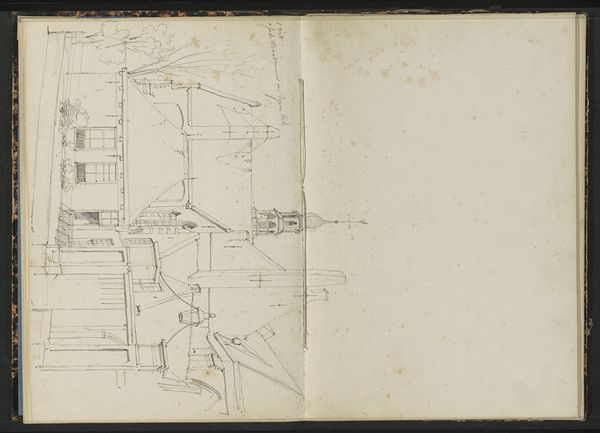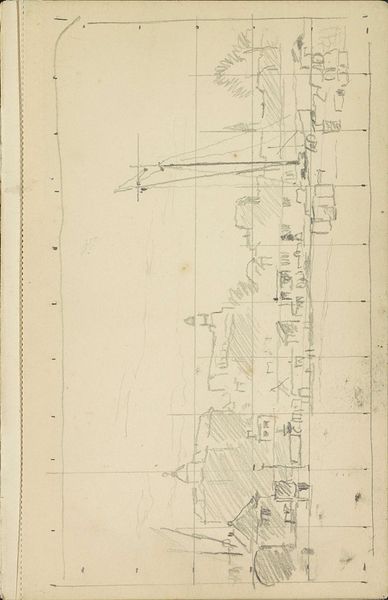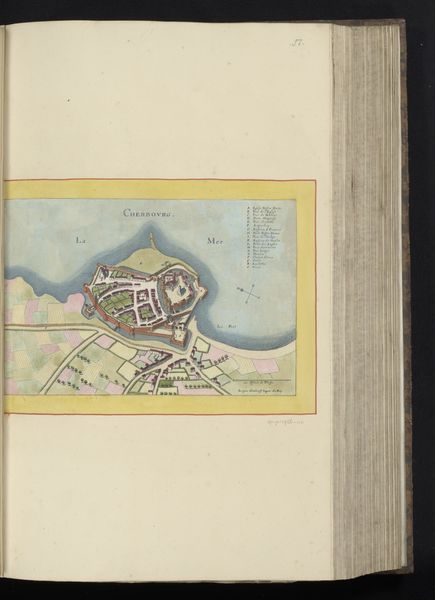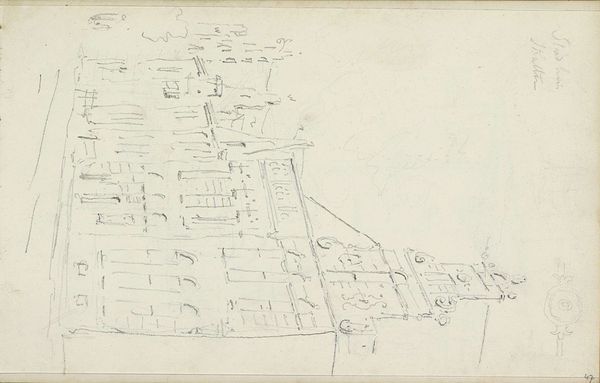
Straat in Warburg, vermoedelijk met de St. Maria Heimsuchung kerk after 1854
0:00
0:00
johannestavenraat
Rijksmuseum
Copyright: Rijks Museum: Open Domain
Curator: Here we have "Straat in Warburg, vermoedelijk met de St. Maria Heimsuchung kerk" (Street in Warburg, Probably with the St. Maria Heimsuchung Church), a drawing made by Johannes Tavenraat after 1854. Editor: It has such a whimsical feel to it, even in its sketchiness. Almost like a memory fading at the edges, or maybe a stage set design. Curator: Precisely. Notice the medium – pencil and pen, typical of sketchbooks. This suggests a preliminary study rather than a finished work, providing insight into Tavenraat's process of observing and documenting the urban environment of Warburg. Editor: It feels like I'm peering over his shoulder as he captures a fleeting moment, a specific angle and light. The quick lines create such an intimate scene. I am immediately wondering about what might have caught his attention. Was it simply the architecture, the layout of the buildings and the impressive church? Curator: It's important to consider the socio-economic factors, too. Travel sketches like these became increasingly popular as industrialization made travel accessible to a broader middle class. We're seeing a democratization of landscape art, moving away from purely aristocratic patronage. This form fits neatly into this period of burgeoning Realism. Editor: And despite the realism you speak of, it also has an element of romanticism because of that intimate personal quality that evokes emotions and mood. Curator: The loose lines hint at a spontaneous, almost journalistic approach. This drawing functions not just as an aesthetic object but as a document of its time, embedded in social shifts concerning labor and leisure. Editor: The stark black and white of the drawing enhances the raw energy that captures a specific time. It really does allow us to travel to Warburg at this very moment! Curator: Yes, and studying Tavenraat’s method also lets us examine artistic labour more closely. These rapid sketches indicate a working practice geared towards efficiency. It would have been relatively inexpensive to produce and allowed him to iterate and ideate freely. Editor: So, in its unassuming presentation it shows us both how the artist makes and perhaps even thinks, very intriguing.
Comments
No comments
Be the first to comment and join the conversation on the ultimate creative platform.
